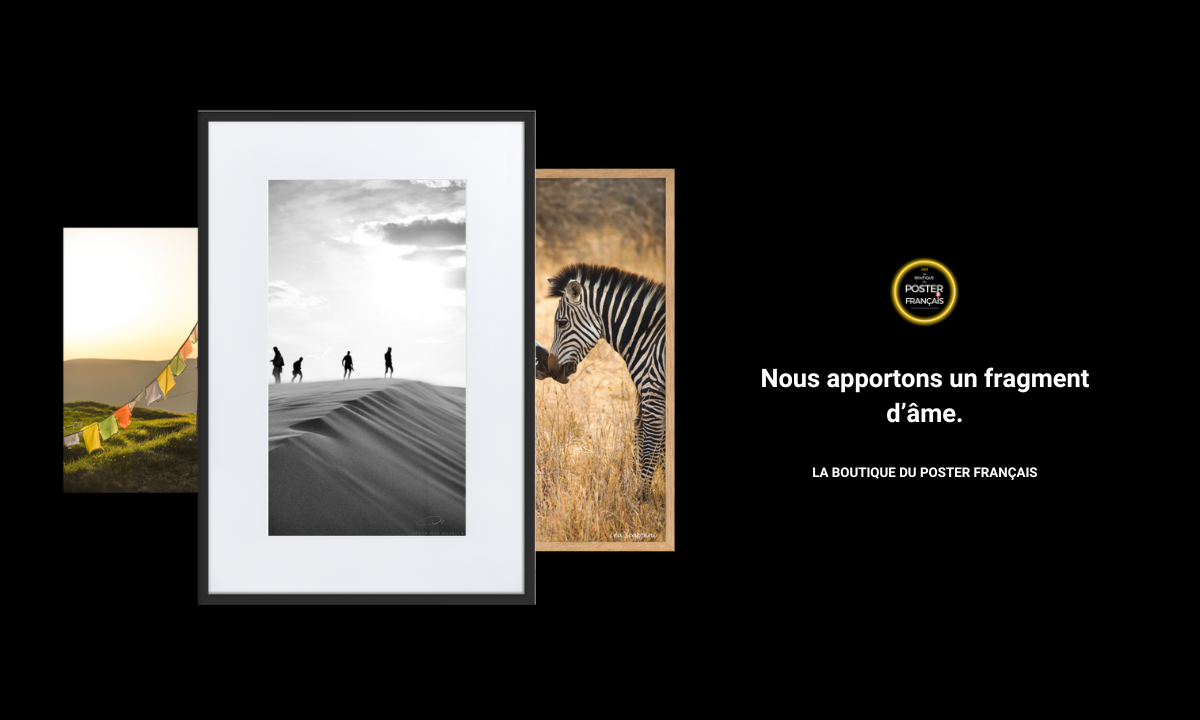Photography is an art form that allows you to capture precious moments and immortalize memories. But for these moments to be perfectly highlighted, it is important to choose the right format. In this article, we will explore the different types of formats in photography and their particularities. You'll also learn how to choose the ideal format for your photography project to create dazzling images that will make you want to share your passion for photography with the world!
Format in photography is a crucial element that determines the appearance and quality of your image. This is the size and shape of the frame in which you capture your photo. The choice of format can affect the composition, aesthetic and emotion you want to convey through your image. By understanding the different types of formats, you can express your creativity and artistic vision more effectively. Although it may seem intimidating, don't underestimate the importance of format in photography. With a little experience and exploration, you can find the ideal format for your photography project and create stunning images that captivate your viewers.
In photography, there are different types of formats, each with its own particularities. The 35mm format is the most commonly used, because it allows quality enlargements while remaining easily transportable. Medium format, on the other hand, offers better image quality thanks to a larger surface area of film. It is particularly suitable for portrait or landscape photography. Finally, the large format is ideal for fine art photographs and large format prints. Although more bulky, it offers unrivaled image quality thanks to its much larger film surface. Depending on your photographic project, you will need to choose the format that best suits your needs and your creative desires. So, don’t hesitate to experiment and explore the different possibilities offered by each format!
Choosing the ideal format for your photography project can seem intimidating, but it can also be an exciting experience. First, determine the intended use of your photos. If you plan to print them in large format, opt for a larger format such as 4:3 or 16:9. If you want more compact images, choose a square or 3:2 format. Next, think about the aesthetic you want to convey. The square format can give a sense of stability and balance, while the panoramic format can provide a wider, more immersive perspective. Finally, remember that you can always experiment with different formats to see what works best for you and your project. Choosing the ideal format may seem difficult, but with a little thought and experimentation, you're sure to find the perfect one for your photography project.
Photography offers endless creative possibilities thanks to the different formats available. It is important to understand the particularities of each format to choose the one that will best suit your photographic project. But beyond the technical choice, let's not forget that photography is above all an artistic and personal expression. So, whatever your preference in terms of format, let your creativity and sensitivity speak to capture unique and inspiring images.
What is format in photography?
Format in photography is a crucial element that determines the appearance and quality of your image. This is the size and shape of the frame in which you capture your photo. The choice of format can affect the composition, aesthetic and emotion you want to convey through your image. By understanding the different types of formats, you can express your creativity and artistic vision more effectively. Although it may seem intimidating, don't underestimate the importance of format in photography. With a little experience and exploration, you can find the ideal format for your photography project and create stunning images that captivate your viewers.
The different types of formats and their particularities
In photography, there are different types of formats, each with its own particularities. The 35mm format is the most commonly used, because it allows quality enlargements while remaining easily transportable. Medium format, on the other hand, offers better image quality thanks to a larger surface area of film. It is particularly suitable for portrait or landscape photography. Finally, the large format is ideal for fine art photographs and large format prints. Although more bulky, it offers unrivaled image quality thanks to its much larger film surface. Depending on your photographic project, you will need to choose the format that best suits your needs and your creative desires. So, don’t hesitate to experiment and explore the different possibilities offered by each format!
How to choose the ideal format for your photography project
Choosing the ideal format for your photography project can seem intimidating, but it can also be an exciting experience. First, determine the intended use of your photos. If you plan to print them in large format, opt for a larger format such as 4:3 or 16:9. If you want more compact images, choose a square or 3:2 format. Next, think about the aesthetic you want to convey. The square format can give a sense of stability and balance, while the panoramic format can provide a wider, more immersive perspective. Finally, remember that you can always experiment with different formats to see what works best for you and your project. Choosing the ideal format may seem difficult, but with a little thought and experimentation, you're sure to find the perfect one for your photography project.
Photography offers endless creative possibilities thanks to the different formats available. It is important to understand the particularities of each format to choose the one that will best suit your photographic project. But beyond the technical choice, let's not forget that photography is above all an artistic and personal expression. So, whatever your preference in terms of format, let your creativity and sensitivity speak to capture unique and inspiring images.




































































Leave a comment
All comments are moderated before being published.
This site is protected by hCaptcha and the hCaptcha Privacy Policy and Terms of Service apply.